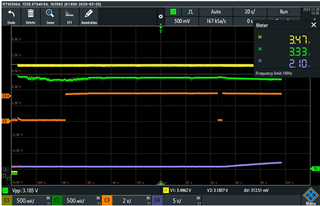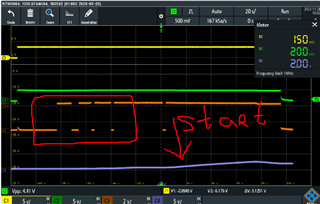Hi
Please help me with solution issues that i have found during my bring up of board with TPS61094DSSR.
My design based on TPS61094D as UPS, the TPS61094D exist between SoM and DC to DC.
I have two issues:
1. According to your data sheet

My input should be high the output at least 100mV in order to start charging the super capacitor, but what i found during my measurements that delta should be at last 180-200mV (my current load request 700-900mA).
what should i do in order to reduce delta between Input to output ?
2. During my output current to load, 700-900mA, exist too much ripples on output, see green line on plot below.
Yellow line is a input power to UPS (TPS61094D)
Blue line is a voltage on super capacitor.
Orange line is EN line - GPIO that short the EN and MODE to one wire.

Vin = 3.47V , Vout to load is 3.33V
the question is:
a. why exist so many ripples on output and how can I smooth them ?
b. why the super capacitor charging start after 170 sec and not immediately after EN is in "high"??

Thank you
Ilya



